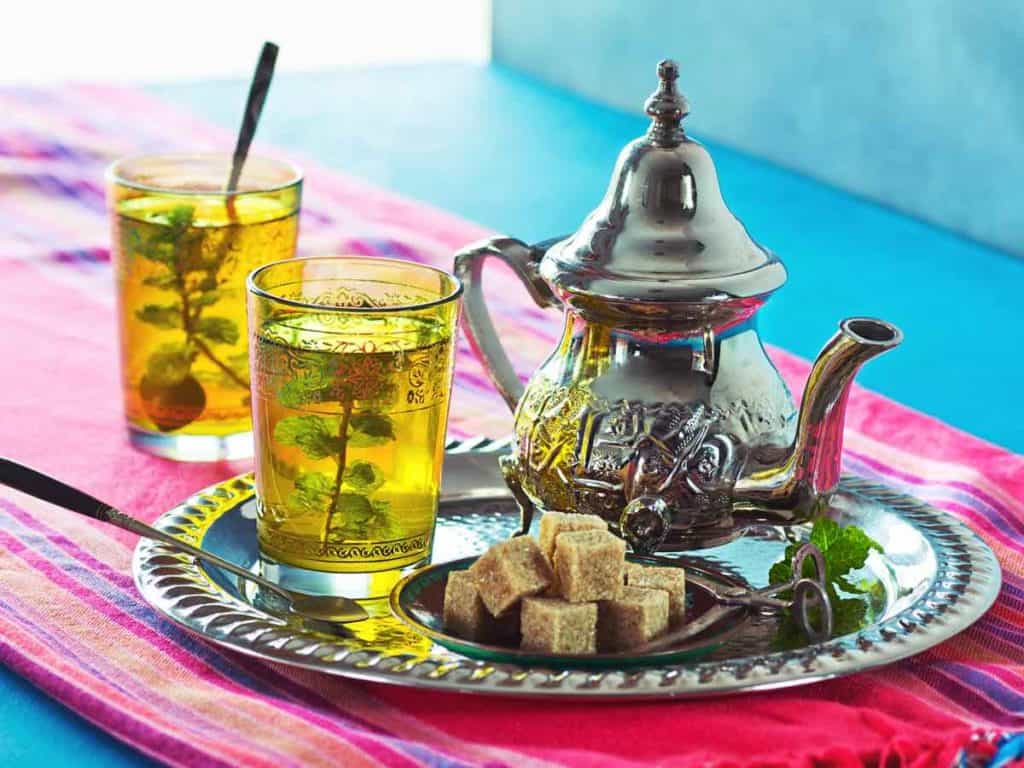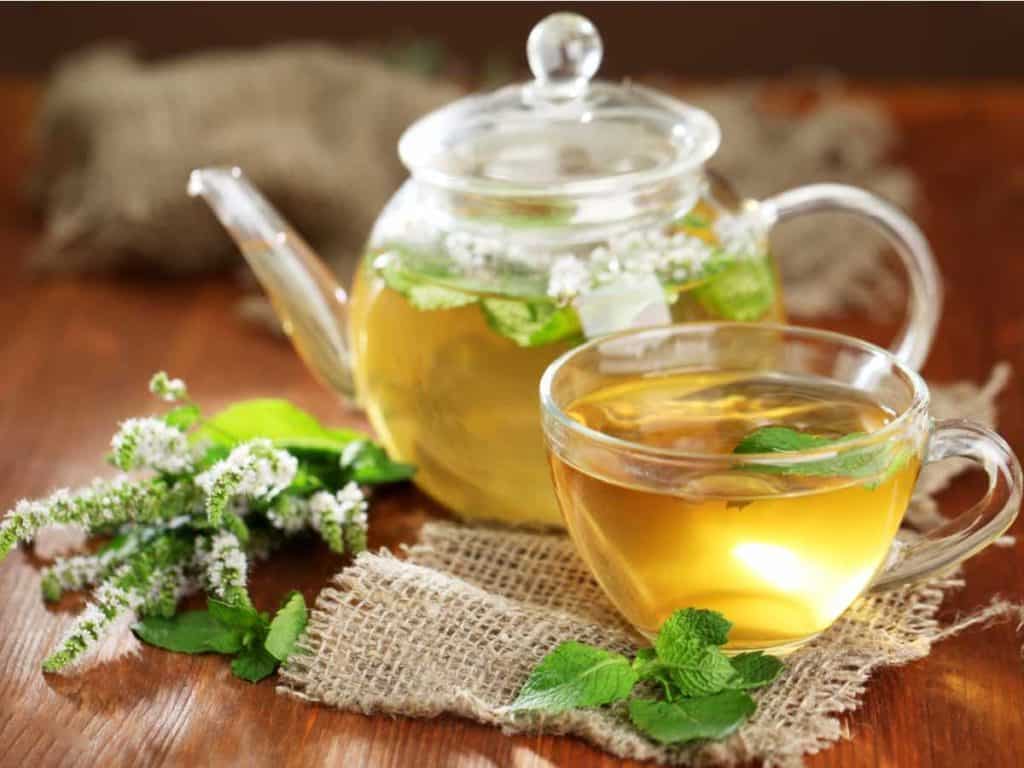Is Mint Tea the Same as Peppermint Tea?
Some herbal teas are simply more delightful to drink than the rest, and mint tea is one of them. Because mint tea has a menthol flavor and aroma, you might be wondering if it’s the same as peppermint tea.
Mint tea can be referred to as peppermint tea if it contains peppermint leaves only. However, some mint teas contain not only peppermint but also spearmint. Some of them may have other mint plants, too. All peppermint teas are considered mint teas, but only some mint teas are peppermint teas.
Got some mint tea-related questions brewing in your mind? Read on!

How Many Mint Varieties are There?
There are more than 600 varieties of mint known to man. Many of them have distinctive qualities, from the aroma, flavor to the health benefits provided. Some of them are named after foods whose tastes they resemble. However, it’s important to note that not all mint plants are fit for human consumption.
Peppermint and spearmint are not the only mint plants on the planet. There are hundreds more!
However, it just so happens that peppermint and spearmint are the most widely used mint varieties for making tea and flavoring various food, personal care and household cleaning products.
Both peppermint and spearmint are highly accessible for a variety of uses as they are grown the most among all mint plant types. That’s because of their medicinal properties and strong wintergreen aroma and flavor. On the other hand, other varieties of mint in existence are not as potent and beneficial.
As a matter of fact, many of them are not edible. So in other words, they are poisonous.
Below is a list of some mint varieties that are not only popular but also safe for humans, which is why you may come across them on the list of ingredients of various food products as well as those you use in and around the home:
- Basil mint
- Pennyroyal
- Calamint
- Field mint
- Corn mint
- Catmint
- Curly mint
- Licorice mint
- Apple Mint
- Pineapple Mint
- Banana Mint
- Grapefruit Mint
- Orange Mint
- Lemon Mint
- Lavender Mint
- Ginger Mint
- Chocolate Mint
- Watermint
Benefits of Drinking Mint Tea
Mint tea is loved by many because it’s refreshing and invigorating. It is also consumed for the many health benefits it offers. Mint tea is primarily known for providing relief from various digestive problems, such as indigestion, nausea and vomiting. Mint tea may also help reduce pain and cold symptoms.
It’s not uncommon for some people to drink mint tea immediately after a meal. That’s because it helps improve the process of digestion as well as relieve digestive issues.
However, mint tea can be consumed at any given time of the day, too, such as in the afternoon and before bedtime.
Unlike true teas such as black tea, white tea, green tea and oolong tea, mint tea does not have any caffeine. This is why ending up tossing and turning in bed all night long should be the least of your worries if you choose to enjoy a cup of mint tea just before you hit the sack — it won’t leave you sleepless.
Some people who like an energy boost during or after a long and tiring day also go for mint tea. This is especially true for those who are sensitive to caffeine and thus experience nasty symptoms after drinking coffee.
Here are some science-backed health benefits mint tea is known to offer:
- Improved digestion. Mint tea helps soothe the muscles of the stomach, which allows bile and digestive juices to do their job without any trouble.
- Digestive problem relief. For many years now, mint tea has been recommended for dealing with an upset stomach, nausea, vomiting, bloating and excess gas.
- Fresher breath. Peppermint and spearmint in mint tea not only mask bad breath but also zap odor-causing germs in the mouth. It’s no wonder why both peppermint and spearmint are common ingredients found in toothpaste, mouthwashes and gums.
- Flu and common cold symptom relief. Mint tea helps open up the airways, thus allowing you to be able to breathe better during a bout of the flu or cold. It helps soothe a sore throat, too. Mint tea is also known to help reduce fever by inducing sweating and cooling the body internally.
- Strengthened immune system. Mint tea contains small amounts of vitamin C, which is necessary for strengthening the immune system. It also has antioxidants that protect the body from free radicals.
- Reduced aches and pains. Traditional healers often recommend the intake of mint tea for dealing with joint and muscle pain, headaches, migraine and menstrual cramps because it serves as a natural muscle relaxant and possesses anti-inflammatory properties, too.
- Lowered stress levels. In the world of Ayurveda, peppermint and spearmint are used for relaxing the mind and body, which is why a cup of mint tea can help you de-stress.
Related Article: Are Tea Leaves Edible?
Do Peppermint and Spearmint Taste the Same?

Peppermint and spearmint are both mint plants. However, they taste different because of the different levels of menthol in them. Peppermint has 40% menthol, which is why it has a sharper flavor that’s almost spicy. Meanwhile, spearmint has 0.5% menthol only, which is why it has a milder flavor that’s a little sweet.
All mint varieties share one thing in common: menthol. It is naturally found in mint plants, although a synthetic form of it also exists, which is made in a laboratory.
Different plants in the mint family contain different levels of menthol.
Among all mint plants, peppermint has the highest menthol content — as mentioned earlier, it contains 40% menthol. As a result of this, it has an almost peppery taste, which is why it has the word “pepper” in its name.
On the other hand, spearmint is subtly sweet because it has less menthol and contains the saccharine chemical carvone.
Despite the significant difference in their menthol content, both peppermint and spearmint are used in cooking. Peppermint is commonly added to sweet dishes and desserts, while spearmint is usually added to savory dishes and drinks.
And because spearmint is not as potent as peppermint taste- and aroma-wise, it’s commonly used in flavoring various products for kids, from toothpaste to cough medicine.
Mint tea that contains peppermint only tends to be robust and possess a sharper flavor. Meanwhile, mint tea that contains spearmint only tends to be mild and kind of sweet. Mint tea that contains both mint plants lets you enjoy the best of both worlds: the full-bodied potency of peppermint and the delicate sweetness of spearmint.
Peppermint Tea vs. Spearmint Tea: Which is Better?
While both peppermint and spearmint are from the mint family of plants, they have different characteristics and offerings when consumed in tea form. When choosing between peppermint tea and spearmint tea, consumers must consider their personal taste as well as which health benefits they wish to enjoy.
The majority of mint tea products in the market combine peppermint and spearmint. However, there are also mint tea options that contain either of the two mint plants only.
It can be challenging to choose between peppermint tea and spearmint tea since they seem the same.
While it’s true that both peppermint tea and spearmint tea have a minty flavor and aroma, which is exactly what sets them apart from other herbal teas, peppermint tea usually has a stronger flavor. That’s because the leaves used, which are peppermint leaves, contain a lot of menthol.
Spearmint tea, on the other hand, has a milder flavor and aroma, which makes it ideal for people who don’t like drinking tea that’s too strong and potent. It also has a mild sweet taste to it.
Earlier, we talked about some of the health perks that come with the intake of mint tea. Since both peppermint tea and spearmint tea are mint plants, they offer the same benefits. However, there are a few important things you need to know in order to make sure that every cup you drink will bring joy and happiness instead of problems.
Got acid reflux? Opt for spearmint tea because it has lesser menthol than peppermint tea — menthol can relax the stomach muscles, which is a bad thing for people with acid reflux as it can cause acid to escape the stomach.
On the other hand, peppermint tea is so much better in improving the process of digestion due to the higher concentration of menthol. It’s also more effective in relieving nausea, vomiting and bad breath. And when employed topically and in the home, peppermint tea can do a much better deodorizing job.
Just Before You Drink Mint Tea
Mint tea typically contains both peppermint and spearmint. In some instances, it contains peppermint only. However, there are also mint tea varieties in the market that contain only either peppermint or spearmint.
When shopping for mint tea, read the ingredients if you want nothing but the best tea-drinking experience.
Related Questions
Does mint tea help with weight loss?
The minty flavor of mint tea can help curb the appetite. It’s exactly for the same reason why many weight loss experts recommend brushing one’s teeth when hungry — toothpaste has a minty flavor. However, for best results, the intake of mint tea should be paired with healthy eating and regular exercise.
Can you add milk to mint tea?
Milk can be added not only to black tea but also to many herbal teas, such as mint tea. Some people who like adding milk to their mint tea also add a little honey. However, you might find that milk can reduce the minty flavor and aroma of mint tea, which may keep you from appreciating the tea fully.
Read Also: Can You Drink Expired Tea?





